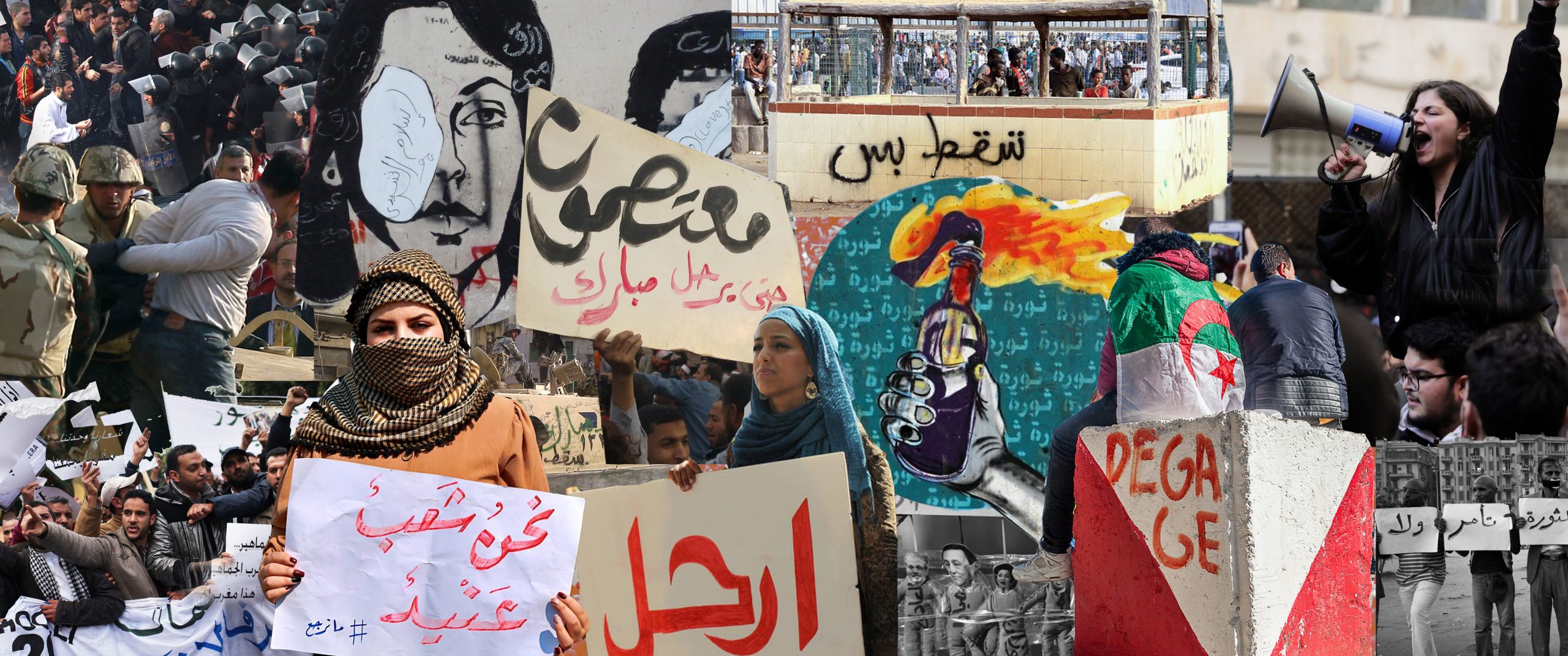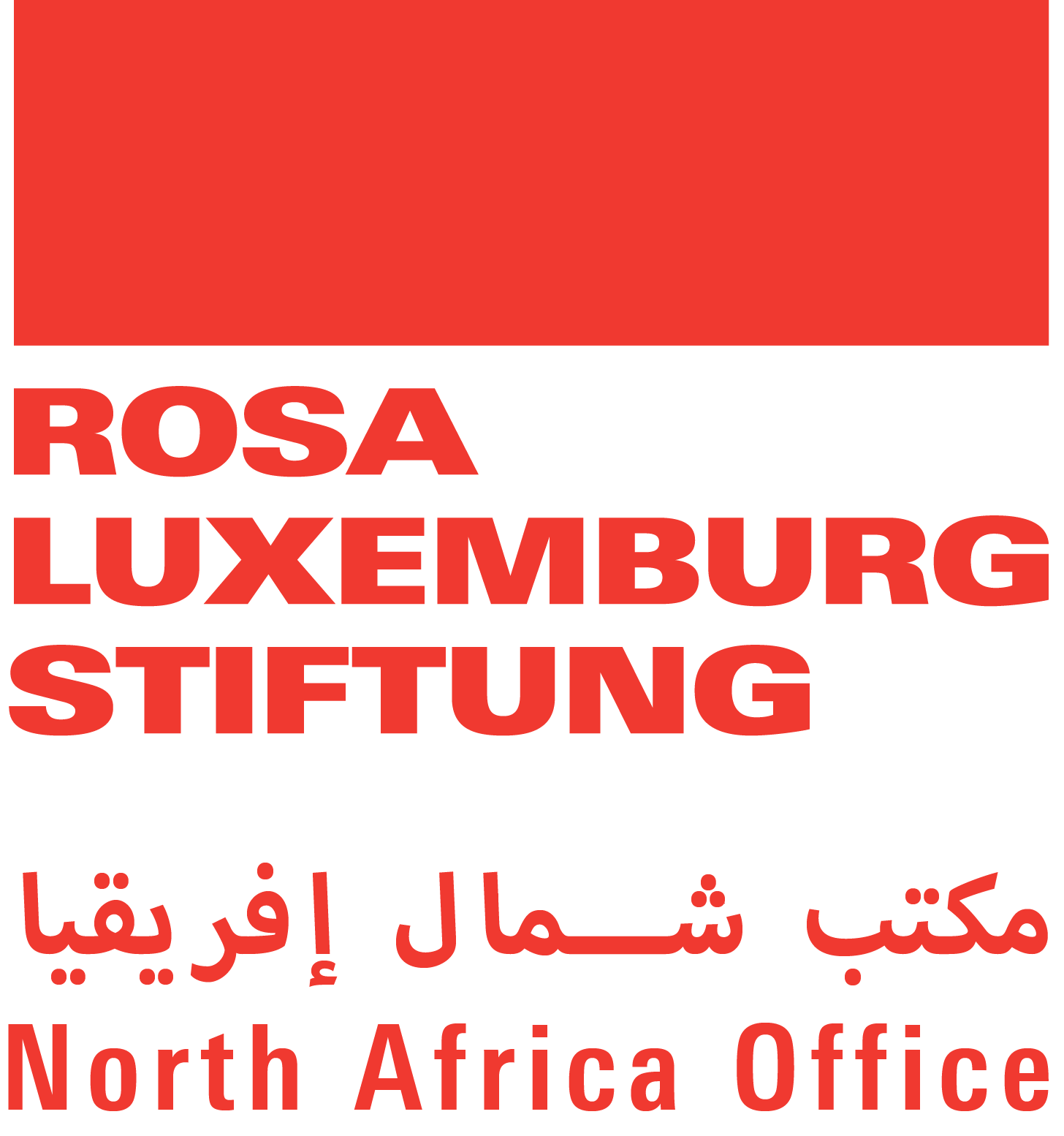
27 October 2021
In his preface to the first edition of The Black Jacobins, the great Trinidadian historian and revolutionary C.L.R. James writes:
In a revolution, when the ceaseless slow accumulation of centuries bursts into volcanic eruption, the meteoric flares and flights above are a meaningless chaos and lend themselves to infinite caprice and romanticism unless the observer sees them always as projections of the sub-soil from which they came. The writer has … not only to analyse, but to demonstrate in their movement, the economic forces of the age; their moulding of society and politics, of men in the mass and individual men; the powerful reaction of these on their environment at one of those rare moments when society is at boiling point and therefore fluid.
This collection of essays recounts the fluid, evolving, thwarted, or suspended revolutionary movements in the Arab world – from the first upheavals in 2011 to the more recent wave of revolts in the latter years of the 2010s. The authors’ thoughtful analyses convey something of the unpredictability and fluidity James writes about so eloquently. It is still too early to discern the longer-term effects of these waves of revolt. Rima Majed echoes this view in her account of the revolutionary processes in Iraq and Lebanon: ‘even the most celebrated revolutions did not unfold without cycles of ebbs and flows, and were decades in the making.’
These essays collectively make clear that the context in which the revolutionary movements emerged was one of imperial intervention; regional interference by counterrevolutionary states; bloated bureaucratic states unleashing spectacular violence; co-optation of most organized political or socioeconomic parties or unions; environmental degradation; a public abandoned to its own devices by exploitation and austerity; and domestic and international deployment of divisive strategies to fragment the population.
External intervention is an underlying theme in all of the pieces. Sometimes this intervention arrives in the guise of the Washington Consensus and globally imposed programmes of austerity and economic liberalization – as we see in the pieces by Hanieh, Amouzai (on Morocco), or Bassiouny and Alexander (on Egypt). Intervention can also occur via free trade deals with richer treaty partners. Ben Khelifa describes the devastation of the textile industry in Tunisia after Ben Ali’s government entered into an association deal with the European Union. Often, regional economic interference – frequently by the counterrevolutionary Gulf states, rich in oil and poor in scruples – can devastate local economies. Hanieh and Ziadah’s accounts of the ‘developmental’ plans of Saudi Arabia and the United Arab Emirates in Yemen, Egypt and elsewhere, and Alneel’s discussion of the fire sale of Sudanese arable lands to Gulf states, are another aspect of the workings of foreign intervention by regional capital. Military incursions and both hot and cold wars have also shaped so much of the recent histories of Arab states: whether it is the United States’ regular wars waged against Iraq and its interventions alongside coalition allies in other states, the civil war in Lebanon, simmering conflict between Morocco and Western Sahara, assaults by Israel against neighbouring Arab countries, vicious domestic counterinsurgencies waged by various states, the dizzying amounts spent by Arab states on military equipment, or the escalating interventions by Gulf states to foreclose the possibility of cascading revolutionary movements.
In all of these states, sclerotic postcolonial governments have adopted so many of the colonial ancien régimes’ characteristics, security and bureaucratic apparatuses, and methods of dividing (so as to conquer) their restive populations. These states represent the national bourgeoisie of which Frantz Fanon warned so urgently, as Hamouchene reminds us. Foremost among the methods of control used by these states is the weaponization of ethno-cultural and regional differences, and the transmutation of these differences into durable political and economic structures that not only generate conflict but, more significantly, become conduits for new modalities of capitalist exploitation. The striation of populations into sects (see Majed on Iraq and Lebanon); the violence against vulnerable minorities (for example, the Moroccan state’s violence against Amazigh and Sahrawis, analysed by Amouzai); the creation of favoured minorities (as Munif shows for Syria); the polarization between secular and Islamist forces (recounted in several of the essays here); and the devastating effect of conflicts between regions and groupings in Libya and Yemen (about which Ziadah writes) are all parts of this process.
Another perceptive point made by all of the authors is that the increasingly authoritarian states are fully embedded in webs of capitalist accumulation across the globe. The attachments of these states to the US empire can vary. Whether rhetorically against the US empire (as Hanieh perspicuously shows for Syria and Libya) or full-throatedly defending their alliance with the US and Europe, these states have nevertheless become fully permeable to the depredations of global capital and the attendant organized abandonment of peoples and the environment that characterizes catastrophic late capitalism.
The subsoil from which these revolutionary movements have emerged has more similarities than differences. They have encountered massive obstacles from within and from without, sometimes because of the weaknesses immanent in the movements themselves, and always because the reactionary forces in the region and beyond have single-mindedly worked to impede these movements, using a range of strategies – not least among them violence. Fourate Chaha’s beautiful and affecting illustrations capture something of the hope and violence of these revolutionary moments, what C.L.R. James calls ‘the fever and the fret’ of this juncture.
In these essays, we see movements that have mobilized different categories of peoples: peasants of the Rif in Morocco and workers in Egypt’s factories (in the accounts by Amouzai, and Bassiouny and Alexander); women in the squares of Iraq, Lebanon, Sudan, Tunisia and further afield (as Zahra Ali, Rima Majed, Muzan Alneel and others show us); and students and unemployed youth in Syria, Algeria, Morocco and Tunisia (as described by Munif, Hamouchene and Ben Khelifa). Alongside more familiar tactics of street protest, work stoppages and general strikes, innovative forms of dissent have characterized these successive waves of protest: takeovers of public spaces and squares (in almost all cases); road blockades (in Tunisia, Lebanon and Iraq); desert sit-ins (in Tunisia); rural protests (in Morocco and Syria); and mutual aid through community bakeries outside the purview of the state (in Manbij in Syria).
The takeover of public spaces has been particularly crucial in these revolts and it is therefore no surprise that autocratic regimes have been eager to shut down these spaces and to terminate public access to and control over them. In this they have been aided by the COVID pandemic. Quarantines and epidemiological measures have historically functioned as a way for the state to not only expand the domain of public health, but also to deepen its security apparatuses. Even setting aside the global inequalities that have been starkly outlined by global vaccine apartheid, we have seen the pandemic itself used as an alibi for draconian border closures, the expansion of police powers, the deepening of surveillance and data-gathering, and for driving the public out of the streets. In effect, any excuse is invoked to expand policing and to deepen militarization. A passage by Frantz Fanon, quoted by Hamouchene, is relevant here:
In these poor, under-developed countries, where the rule is that the greatest wealth is surrounded by the greatest poverty, the army and the police constitute the pillars of the regime; an army and a police force which are advised by foreign experts. The strength of the police and the power of the army are proportionate to the stagnation in which the rest of the nation is sunk.
The authors of these pieces, however, also point to internal weaknesses plaguing these movements: the absence of independent unions in some places has led to fragmented revolutionary forces and a working class that is difficult to mobilize in a coherent and decisive way. Fossilized and conciliatory political parties, on the one hand, and leaderless (or decapitated) and often transitory movements, on the other hand, have prevented the emergence of robust, dense, lasting political movements that can weather the assaults made against them. Sometimes the protests have challenged sectarianism by invoking a narrow nationalism, sometimes they have pushed against Islamists in power by supporting autocratic factions. On occasion, liberal slogans against corruption have occluded the structural inequalities and economic injustices that characterize everyday forms of capitalist exploitation. The incompetence and venality of these states have sometimes been countered by a call for technocratic – rather than democratic– governance. And again and again, violence has characterized state responses to popular anger and grievance.
In the face of counterrevolutionary foreclosures of protest from within and without, the authors point to a few spaces of possibility. Unanticipated spontaneous conflagrations have been crucial in igniting these successive waves of protest. As all of the authors indicate, economic grievances have always been at the core of the struggles, which have often taken on a political shape. The materiality and necessity of bread; the demand for jobs, economic equity and political accountability; the anguished and angry cry against the purloining of Arab countries’ resources by capitalists at home and abroad – all show a possible path to the future. The intensifying acknowledgement that capitalist exploitation not only devastates communities and working classes but also the environment now shapes the strategies of many movements across the global South.
Perhaps the most hopeful suggestion across the range of these essays is a call for regional and global solidarities. Solidarity with peoples trapped under the bombs of their own and outside interventionist regimes, with the Palestinian people, and with emancipatory movements the world over, is crucial to the long struggle against capitalism and its executive committee, the authoritarian state. Hamouchene draws from Fanon’s writings about Algeria – and indeed Fanon’s life itself – to remind us that in an interconnected world, where capital’s webs entangle us across borders, forms of solidarity also have to be cross-border and trans-regional. We need to learn from one another, connect our struggles to one another, and – while being alert to the way the Third Worldist emancipatory movements of the 1960s were assaulted, co-opted or domesticated – we need to be ‘inspired by [their] insurgent hope and [to apply their] internationalist perspective to the current moment’ (Hamouchene).

